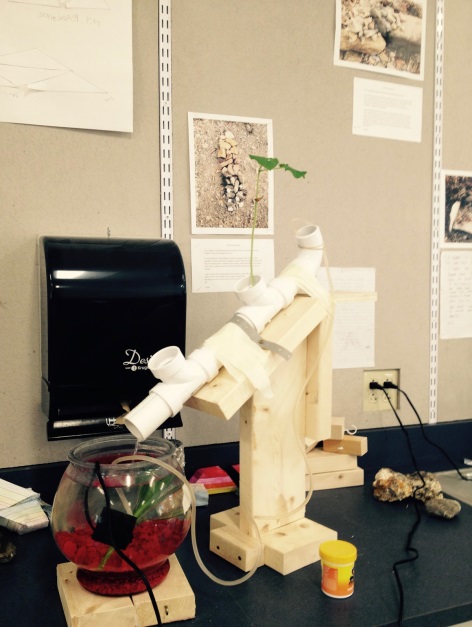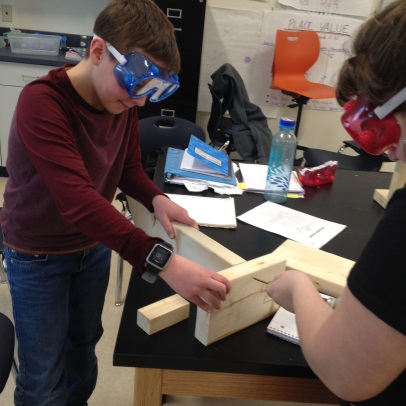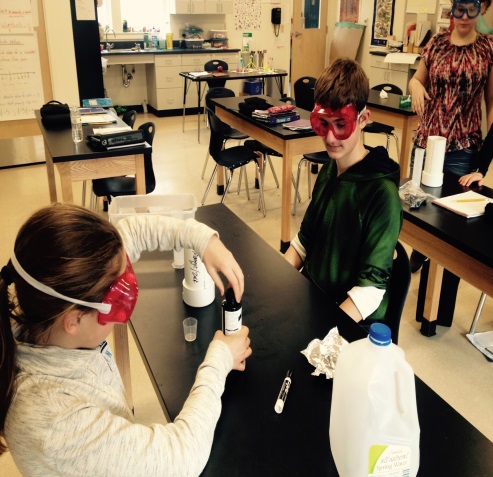What is Aquaponics?
Aquaponics is a form of farming in which plants receive nutrients from fish waste in a symbiotic relationship, decontaminating the water. The fish produce waste, and plants use that waste for nutrients to grow. This creates a cycle, with the fish eating, the plants purifying the water, and us, the farmers, harvesting the fruits and vegetables from the plants. In addition to the harvesting of the vegetables, we can also harvest the fish.

What Have We Done with It?
We have done many things with aquaponics! Last year, the 5th and 6th graders worked for two months to create a presentation complete with an aquaponics system. The school board approved our request, and we now have a 33-foot diameter greenhouse dome at school. Inside the greenhouse, we have a giant tank of water, which we will use for a floating aquaponics system. We’ll grow tilapia in another tank and use the plants to clean the waste from the fish. Hopefully, we’ll eat both the fish and the plants in the cafeteria, so kids can experience the health and wellness of fresh, local food.

Starting off at a smaller scale, we are currently working with goldfish in class, studying the cycle of aquaponics. We have made our own filtering system composed of hydroponic rockwool, which both filters the water and provides a place for growing our plants, as this is what the plants anchor to. The growing seeds use the aquarium water running through the pipes for nutrients. The excreted wastes from the fish are denitrified by beneficial bacteria, changing the waste from ammonia to nitrate, which all plants need. The water that returns to the tank is filtered and provides oxygen as it pours back into the tank.
What are We Learning?
Here are the major topics we’ve covered while getting our tanks ready for our fish and plants:
• Nitrogen Cycle – denitrifying bacteria to promote healthy plants and fish
• Carbon Cycle – movement of waste and CO2; carbon footprints — see URL – http://footprintwwf.org.uk/ to determine your own carbon footprint
• Photosynthesis – autotrophs and carbon cycling, and importance of chlorophyll
• Nutrient Cycling – movement of energy and minerals through ecosystems
• Water quality – pH and ocean acidification / carbonate levels
• Biomagnification – pollution moving through the food chain
• Symbiosis – mutualism, commensalism, and parasitism
In our classroom, we are experimenting with fish tanks. With the goldfish in our tanks, we are seeing how the fish and plants affect each other in a mutualistic environment. So far, we have seen that the fish waste is being used as nutrients in the water for the plant. The plant uses these nutrients as a natural fertilizer. The plant uses energy from photosynthesis to purify the water, which is advantageous for the fish.
We’ve incorporated aquaponics into our everyday classroom by monitoring our plants, fish, and water quality, running experiments to test for future implementation of a large-scale aquaponics system in our new greenhouse. Currently, we’re trying to reduce the ammonia levels in the tanks by culturing denitrifying bacteria. We plan to run our water through these cultured bacteria baths before sending the water to our plants. Hopefully, we’ll increase the nitrate levels for the plants while also reducing the overall nitrogen levels for our fish.
How Does Aquaponics Promote Sustainability?
Aquaponics works with sustainability by not using as much natural land resources. Particularly, lots of land is currently being used for farming, but there really isn’t that much arable land on our planet. With aquaponics and aquaculture, there is little land required, so it’s just mostly about water. Growing produce in our greenhouse means local food without carbon emissions released for transport. And, since we don’t need to add any fertilizers because are fish are doing that work, we further reduce our impact on the environment. Lower emissions mean less carbon dioxide in the atmosphere, which means slowing the acidification of the oceans, which means a healthier planet for all. Finally, once we have our larger system running, we will possibly get fish protein from our own greenhouse, reducing our impact on local fish populations.

Aquaponics is a pretty cool thing because it saves the earth while giving us healthy food.
— Guest post by Edna Drinkwater School science teacher John Van Dis











Leave a Reply